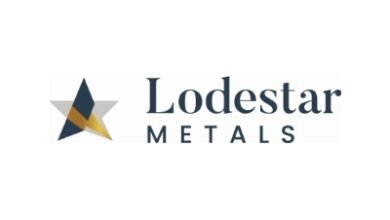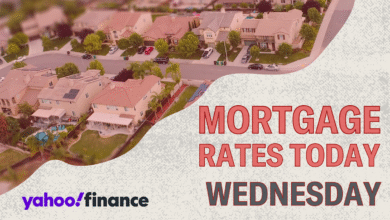Third Federal Savings and Loan Home Equity Review 2025

Founded in 1938, offers home equity loans and home equity lines of credit (HELOCs) with a variety of terms, providing homeowners with flexibility at an affordable rate. In fact, its low rates earned Third Federal a spot on CNBC Select’s .
Read more: What is home equity?
We love that the Cleveland-based lender doesn’t charge closing costs on home equity products and offers a $1,000 rate match guarantee if another bank quotes you a lower rate. Additionally, unlike most lenders, Third Federal offers both fixed- and adjustable-rate home equity loans.
It only operates in about half the U.S., however, and has a relatively low lending cap for home equity products.
Third Federal Savings and Loan Home Equity
-
Loan types
Home equity loans and HELOC
-
Minimum credit score
-
Maximum loan-to-value
-
Home equity loan limits
-
HELOC draw amount
-
Terms
Home equity: 5 or 10 years (fixed), 30 years (variable). HELOC: 20 years
-
Availability
Available in 25 states and Washington, D.C.
Pros
- No closing costs, annual fees or prepayment penalty
- Reports that its rates are 0.50% below the industry average
- Will pay $1,000 if you find a lower rate elsewhere
Cons
- Only operates in 25 states and Washington, D.C.
- Maximum HELOAN repayment term is only 10 years
- Home equity products are capped at $300,000
- Requires in-person closing
Third Federal home equity review
Third Federal home equity overview
Third Federal offers home equity loans and HELOCS in Arizona, California, Colorado, Connecticut, Georgia, Florida, Illinois, Kansas, Kentucky, Massachusetts, Maryland, Michigan, Missouri, North Carolina, New Hampshire, New Jersey, New York, Ohio, Oregon, Pennsylvania, Tennessee, Virginia, Washington state and Washington, D.C.
Third Federal home equity loans
- Repayment terms: 5 or 10 years fixed, 5/1 adjustable
- Loan amount: $10,000 to $300,000
Read more: What is a home equity loan?
Third Federal HELOCs
- Repayment terms: 10-year draw with interest-only payments, 30-year full repayment period
- Loan amount: $10,000 to $300,000
Read more: What is a home equity line of credit?
Home equity requirements
In addition to a home appraisal, Third Federal home equity loans and HELOCs require:
- Credit score: Undisclosed
- Max loan-to-value ratio: 80%
- Max debt-to-income ratio: 50%
Third Federal customer service
Third Federal received an A+ from the Better Business Bureau, based on transparency, truthful advertising and its response to consumer complaints. It has a relatively small footprint, however,: operating in just 25 states and maintaining physical branches in only Florida and Ohio.
Customer service is available Monday through Thursday from 8:30 a.m. to 5 p.m., Friday from 8:30 a.m. to 6 p.m., and Saturday from 8:30 a.m. to 1:30 p.m. There are no Sunday hours.
While Third Federal has a website and mobile app, neither has much information on how to qualify for approval.
How does Third Federal compare?
Rocket Mortgage Home Equity
-
Loan types
-
Minimum credit score
-
Maximum loan-to-value
-
Loan limits
-
Repayment period
-
Availability
Available in all 50 U.S. states and Washington, D.C.
Pros
- Higher-than-average combined loan-to-value ratio at 90%
- High customer satisfaction reviews
- Excellent online user experience
Cons
- High minimum loan amount
- No brick-and-mortar locations
- Only provides two term options: 10 years and 20 years
For versatility, Third Federal Savings and Loan outshines Rocket Mortgage, which only offers home equity loans. In addition to higher rates and fewer terms, Rocket also charges closing costs, which Third Federal does not.
Rocket is far superior in terms of availability, though, with loans and some form of online closing available in all 50 states. Third Federal only services half the country and requires an in-person closing.
Rocket also offers repayment terms of up to 30 years for home equity loans, compared to the 5- or 10-year terms offered by Third Federal.
Third Federal vs. Figure
Figure
-
Loan types
HELOC, DSCR, cash-out refinance, crypto-backed loan
-
Minimum credit score
-
Maximum loan-to-value
-
HELOC draw amount
-
HELOC draw period
-
Repayment period
5 years, 10 years, 15 years, 30 years
-
Availability
Figure HELOCs are available in all states but Hawaii.
Pros
- Funding as soon as 5 days
- E-closing available
- No opening fees, prepayment fees or maintenance fees
- High LTV maximum
Cons
- Not available in all states
- Maximum draw period is five years
Available APRs range from 6.65% to 14.60%, which includes the payment of a higher origination fee in exchange for a reduced interest rate, which is not available to all applicants or in all states. The lowest APRs are only available to the most qualified applicants, depending on credit profile and the state where the property is located, and those who also select ten year loan terms; APRs will be higher for other applicants and those who select longer loan terms. Your actual rate will depend on many factors such as your credit, combined loan-to-value ratio, loan term, occupancy status, and whether you are eligible for and choose to pay a higher origination fee in exchange for a lower rate. Rates change frequently so your exact APR will depend on the date you apply. APRs for home equity lines of credit do not include costs other than interest. You will be responsible for an origination fee of up to 4.99% of your initial draw, depending on the state in which your property is located and your credit profile. You may also be responsible for paying the costs of valuation if an AVM is not available for your property ($180), or an appraisal if your loan amount exceeds $400,000 ($500-$2,000, depending on property type, property value, and state), manual notarization if your county doesn’t permit eNotary ($350), and recording fees ($0 – $315) and recording taxes, which vary by state and county ($0- $1,400 per one hundred thousand dollars borrowed). Property insurance is required as a condition of the loan and flood insurance may be required if your property is located in a flood zone.
While Figure is available in more states, Third Federal offers more flexibility with its HELOC: Borrowers have a 10-year draw period and a 30-year repayment phase, whereas Figure requires borrowers to use the full line of credit in their initial withdrawal. The line only remains open for a maximum of five years.
Additionally, Third Federal offers both home equity loans and lines of credit, while Figure only has HELOCs.
Figure is an online-only lender, but it offers virtual perks that Third Federal does not, such as remote closing and a virtual appraisal process.
How to apply with Third Federal
You can apply for a home equity loan or HELOC with Third Federal Savings and Loan online, over the phone or in person at one of 37 branches in Florida and Ohio.
You’ll need to provide personal information, including your photo ID, Social Security number, pay stubs, your most recent W-2s and (for self-employed borrowers) two years of personal tax returns.
You’ll also need to provide details about the property, including the deed and recent mortgage statements. During the underwriting process, the home will be inspected and appraised.
A notary will have to outline the final loan documents in person before Third Federal will release the funds to you.
Is a Third Federal home equity loan right for me?
Third Federal is a great option if you’re looking for a small to medium-sized home equity loan or HELOC at a reasonable rate. There are no closing costs, minimum draws or prepayment penalties.
But its home equity products max out at $300,000, so if you need a larger loan — or live in one of the 25 states it doesn’t operate in — you’ll want to look for another lender.
Third Federal Savings and Loan FAQs
What credit score is required for a HELOC?
Most lenders require a credit score of 650 to 680 to qualify for a HELOC or home equity loan.
Is Third Federal Savings and Loan legit?
Yes, Third Federal Savings and Loan has been a trusted financial institution since its founding in 1938. Deposits are FDIC-insured and BauerFinancial has consistently given Third Federal five stars for strength and stability, its highest rating. Additionally, it has earned an A+ rating from the Better Business Bureau.
What is Third Federal’s lowest rate guarantee?
Third Federal promises to beat a competitor’s offered rate on a purchase mortgage or home equity line of credit or it will pay you $1,000. You must provide documentation of the lower rate; however, a decision regarding the rate challenge is typically made on the same day it’s submitted.
How long does it take to get approved for a Third Federal HELOC?
Third Federal does not provide a timeline for its approval. However, most lenders approve HELOC applications within four to six weeks.
Subscribe to the CNBC Select Newsletter!
Money matters — so make the most of it. Get expert tips, strategies, news and everything else you need to maximize your money, right to your inbox. Sign up here.
Why trust CNBC Select?
At CNBC Select, our mission is to deliver high-quality service journalism and comprehensive consumer advice to our readers, enabling them to make informed financial decisions. Every mortgage review is based on rigorous reporting by our team of expert writers and editors with extensive knowledge of financial products. While CNBC Select earns a commission from affiliate partners on many offers and links, we create all our content without input from our commercial team or any outside third parties and we pride ourselves on our journalistic standards and ethics.
Our methodology
CNBC Select reviews mortgage products using a variety of criteria, including average rates, terms, availability, fees, types of loans offered, online experience and customer satisfaction.
Additionally, we incorporate findings from independent sources, including lender scores from the J.D. Power mortgage origination and servicing surveys and ratings from the Better Business Bureau.
For home equity loans, we review rates, repayment terms, the amount of equity required and the minimum and maximum loan amounts available.
We also consider requirements for credit scores, debt-to-income ratios and combined loan-to-value ratios.
Catch up on CNBC Select’s in-depth coverage of credit cards, banking and money and follow us on TikTok, Facebook, Instagram and Twitter to stay up to date.
Editorial Note: Opinions, analyses, reviews or recommendations expressed in this article are those of the Select editorial staff’s alone, and have not been reviewed, approved or otherwise endorsed by any third party.
Credit: Source link






